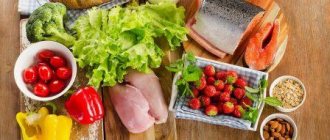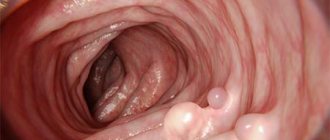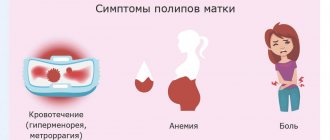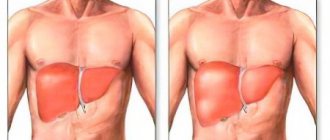Celandine grows in the European part of Russia, in the Caucasus; its variety with more elongated leaves is also found in Siberia. The doctors of Ancient Greece knew about its medicinal properties of this herb. The plant was used to cleanse the blood and treat eye diseases. In Rus', this herb was called warthog, swallow grass, clean grass, yellow grass and witch grass. They applied it to warts, freckles, bathed children in it, and even treated lupus with it.
In botany, celandine is defined as a perennial poisonous plant of the Poppy family, up to 80 cm tall, with bright yellow flowers and milky orange juice. The flowering period of the plant begins in spring and continues until autumn. In the southern regions it can bear fruit several times during the summer. Ants love to eat the black, shiny, oily seeds of celandine; they are also their carriers.
For medicinal purposes, the grass, juice and roots of celandine are used, but flowers are also used in Tibetan medicine. Cut the plant at the beginning of flowering with a sickle, scythe or pruning shears to preserve the juice. The cut grass is dried in a thin layer in the attic or under sheds with good ventilation. The plant is periodically turned over, and readiness is determined by the crunch. When packaging raw materials, use masks, as its dust can irritate the nasal mucosa. Dry grass is stored for no more than 3 years.
Medicinal properties of celandine
The healing properties of celandine are explained by its composition. Most of the chemical compounds are concentrated in the roots of the plant, and the nutrients in the young grass. This is explained by the fact that celandine is less poisonous at the beginning of flowering, and therefore more suitable for treatment.
The entire plant contains more than two dozen alkaloids that are complex in structure, 5 of which are very dangerous. In grass their amount does not exceed 2%, and in roots it can reach 4%. For example, the alkaloid berberine inhibits the accumulation of cholesterol in the cells that create arteriosclerotic plaques and, according to a number of studies, has an anticancer effect in certain types of cancer. Chelidonine has an antispasmodic effect, reduces heart rate and blood pressure, while the alkaloid homochelidonine, on the contrary, has the opposite effect.
Celandine also contains saponins, essential oils, flavonoids, beta-carotene, malic, citric, succinic and ascorbic acids - they have antiviral, antitumor and antioxidant properties. Thanks to this composition, celandine preparations affect the growth of malignant tumors at an early stage and have an antifungal and antibacterial effect on mycobacterium tuberculosis.
Good to know
What do you need to know about medicinal plants for them to be beneficial?
Today, celandine is used to treat many skin diseases, including psoriasis and itchy dermatoses. Externally, they cauterize warts and treat hard-to-heal wounds, including skin tuberculosis. The plant is taken internally for diseases of the liver, gall bladder and stomach ulcers, as the herb has choleretic, antispasmodic and anti-inflammatory properties. With the help of celandine juice, you can get rid of polyps, sinusitis or toothache; if you add the juice to shampoo or conditioner, you will get an effective remedy for dandruff and seborrhea.
In Soviet homeopathy, the herb, roots and juice of celandine were used. Decoctions from the roots were drunk for dysentery, jaundice, gout, they achieved a diuretic effect and were used as an anesthetic for wounds and skin ulcers. Domestic medicine includes celandine as the main component in medicinal preparations for diseases of the liver, gall bladder and the treatment of gout.
Despite the wide range of healing properties, celandine can only be used as prescribed by a doctor.
Ready-made celandine can be purchased in the following form:
- celandine grass;
- celandine grass in filter bags;
- tincture of celandine;
- celandine juice;
- celandine cosmetic oil;
- candles with celandine.
show more
Petr Tsarkov: “There is no need to be afraid of colon cancer”
The dangers of cleansing enemas, how promiscuity contributes to the development of rectal cancer and what to do with hemorrhoids that occur during pregnancy were told to Gazeta.Ru by Petr Tsarkov, director of the clinic of coloproctology and minimally invasive surgery at the First Moscow State Medical University named after Sechenov.
– Does fecal transplantation help with any intestinal diseases (transferring the feces of a healthy person to the intestines of a patient in order to restore the microflora)? Is this method used in Russia?
– To date, there is no data obtained using evidence-based medicine that the fecal transplant method is effective for intestinal diseases. All of these early positive reactions to fecal transplantation eventually led to randomized placebo-controlled trials.
And it turned out that the effect of using fecal transplantation is approximately equal to the effect of a placebo, that is, a pacifier.
Perhaps there will be certain shifts in this direction, because research is underway. Most scientists are inclined to think that either a combination or a whole series of some microbes leads to serious diseases that destroy the microflora and cause an allergic-immune reaction of the body to the presence of these microbes in the intestinal lumen.
And, in all likelihood, this is one of those ways that will help us in further solving the problem, but finding a combination of those microbes, those “transplants,” roughly speaking, is not very easy. That is, simply introducing the microbiota of a healthy person to another person (at least in those studies that have been published now) does not have any serious effect.
I myself thought that this was the future. We are making attempts, but they are more artisanal in nature than industrial. There are several large pharmaceutical companies in the world that are currently developing such drugs, but they are not yet widely used.
– In certain circles, cleansing procedures are popular - enemas, laxatives and teas, etc. What is the danger of such procedures?
- This question connects very well with the previous one, because any use of a laxative is stress for the intestines. The laxative has the necessary effect that we must use when there is no independent stool. This is a necessary measure, and we understand that using a laxative only cures our symptom - constipation.
Cleansing enemas have the same effect as a laxative, that is, the microbial composition in the colon, which is the main carrier of our microbiota, is disrupted. By washing out the microflora from there, we make room and, along with the bad organisms, we wash out the good ones, and force our “good” microflora to resort to the same measures - that is, to restore their numbers. This is not always possible.
If this is done on a regular basis, it can lead to depletion of microflora and the development of undesirable effects, including chronic inflammatory changes in the colon.
— What other factors provoke intestinal diseases besides a sedentary lifestyle, poor diet, alcohol, smoking?
— If we talk about specific risk factors, this is, for example, a free attitude towards sex life. Unfortunately, the number of diseases associated precisely with changes in the sexual behavior of modern people compared to previous years is growing today, both among women and men. This is due, among other things, to such a not very noticeable phenomenon as the spread of the human papillomavirus.
It is better known as a virus that causes cervical cancer in women, but approximately the same trends are observed today in the direction of anal cancer, because the epithelium of the cervix and the epithelium of the anal canal are similar in structure and are very easily damaged by this virus. Infection occurs if a person has more than five sexual partners at the same time.
It is believed that promiscuity can lead to an increased risk of contracting the human papillomavirus, some strains of which are highly carcinogenic.
We see this in the incidence of cervical cancer, but today the incidence of anal canal cancer is also increasing, which is not yet very bright in reports, but year after year it is receiving more and more attention in Western countries.
— What is the risk of developing hemorrhoids during pregnancy? What to do in such cases?
“This is a moment that is not connected with our way of life. The heavier the fetus, the fewer changes occur in the hemodynamics of the lower half of the female body. And this in itself is a risk factor for the development of acute thrombosis of hemorrhoids. The situation is aggravated by the fact that the woman is practically defenseless at this moment; we cannot use any medications on her. And those drugs that are recommended are often ineffective. Well, those that are effective are sometimes inapplicable.
Opposite our clinic is one of the oldest obstetric clinics in Moscow, the Snegirevskaya Clinic. We are conducting a joint study of the prevalence of hemorrhoidal disease and acute thrombosis of hemorrhoids in pregnant women, and today I can announce the first results:
approximately one in five women have problems with hemorrhoids during pregnancy, and these problems are acute and require our help.
But in this situation we are somewhat limited. Today, from a surgical standpoint, we help women in whom this thrombosis has led to node necrosis. The fact is that acute thrombosis of hemorrhoids in some cases leads to necrosis of the skin over them. Due to the fact that a blood clot has formed in the hemorrhoidal node, swelling has formed around it, the blood supply to this node is disrupted, and since the blood does not flow, the tissue is not nourished, it begins to die.
This is accompanied by terrible pain for everyone. In this situation, we remove such nodes under the same spinal anesthesia under which the woman will go into labor, and this removal usually results in immediate relief of symptoms.
— Is there any specific prevention for pregnant women?
- We can say that perhaps this is a lot of activity during pregnancy, some kind of gymnastic exercises, but this is an unexplored issue. Pregnancy is a very delicate process that few people want to interfere with, leaving it to nature. Because research into any of our actions aimed at pregnant women without special need can cause harm, and our commandment, first of all, is to do no harm.
— What aspects of your activity, in your opinion, are still important?
— Our clinic is particularly interested in several areas, the largest of which is the treatment of colon cancer. I would say that, for example, February was World Colon Cancer Day, and March was Colon Cancer Awareness Month in the United States. For a whole month, the media and doctors publish various stories, descriptions of rare and common cases of colon cancer on special pages and on hospital websites.
Today we already raised the question of whether colon cancer is getting younger. We are in a period of time when among young people there are those who are very attentive to their health, and there are those who are not very attentive to it. Young people now, at least in Moscow, have begun to pay attention to their health.
And we very often meet young people who, with early symptoms, seek help, thinking that they have, say, hemorrhoidal disease or something else. If they are in the right hands from the start, they get the right screening test, which today is no more and no less than a colonoscopy.
If you have blood in your stool at the age of 20, this is already evidence that something is wrong.
The most likely cause of this is most likely hemorrhoidal disease, but we cannot know this for 100%. You need to start with the fact that a person should not see his blood. Another symptom that should immediately alert you and that occurs much earlier than the appearance of blood is a change in bowel function compared to the previous period of life. If something has changed and these changes are progressive, this is a reason to consult a doctor - be it constipation, be it diarrhea, be it rumbling, discomfort, lack of appetite. This allows cancer to be detected at earlier stages.
The sooner you see a doctor, the more effective the treatment will be.
Today we have achieved that the first stage of colon cancer is almost 100% curable, the second stage is more than 90% curable, the third stage with proper treatment is approximately 70% curable, and only in the fourth stage we do not have very good results, but they are not zero - already 20-25% of patients recover even with the fourth stage.
In colon cancer today, if we take the general population of patients, regardless of stage, in countries such as South Korea, Japan, northern European countries, the survival rate of patients after treatment is more than 75%. This is a very high number. Therefore, there is no need to be afraid of this disease, we just need to try to prevent a tragedy, and not wait until we can no longer do anything.
We treat cancer very effectively even in advanced stages of the disease. I am talking about this because my personal practice has a fairly large list of people, including young people, who live happily after treatment for colon cancer.
Cancer treatment is surgical, it consists of local removal of the tumor. We don't remove the organ. 10 days after surgery, the patient can return to their previous lifestyle. But you will need to have a colonoscopy every year.
I would also like to draw your attention to the fact that the only 100% method for diagnosing cancer and precancerous diseases of the colon is colonoscopy.
All other methods are auxiliary. Moreover, colonoscopy allows not only diagnosis, but also secondary prevention of cancer. During primary colonoscopies, a lot of small growths are discovered - colon polyps, which are removed.
Today it has been proven that any such formation of the colon, even the smallest one, is one step towards the development of colon cancer. On average, it is believed that cancer from a polyp develops within five years, but these figures are rather speculative. Each of us has our own rate of cancer development. But if you remove these polyps, there will be no cancer.
Contraindications for celandine
Celandine is a poisonous plant, so it has many contraindications. It is no coincidence that cows on pasture never chew this grass. The alkaloid chelidonine in its composition leads to complete paralysis of the nervous system in animals. Therefore, you need to use preparations with and preparations with celandine carefully. If the dosage is violated, the plant can lead to serious irritation and inflammation of the digestive system or lower blood pressure to a critical level, so it should not be used by people with hypotension.
It is strictly forbidden to take celandine also for epilepsy, psychosis and other disorders of the nervous system. The plant is contraindicated for bronchial asthma, angina pectoris, decompensation and cardiac activity of I and II degrees.
In case of overdose or poisoning with celandine, due to the large amount of alkaloids, severe thirst, heaviness in the head and stomach, nausea with vomiting and diarrhea occur. In severe cases, fainting and hallucinations are observed. It is especially difficult for a child's body to cope with intoxication. For this reason, pediatricians prohibit giving celandine and preparations with it to children. Pregnant women should not take medications from this plant, even if indicated. Celandine alkaloids enter the blood of the expectant mother and can cause uterine tone, fetal hypoxia and poisoning.
In case of overdose of celandine, it is necessary to thoroughly rinse the stomach and consult a doctor.
When treating with celandine juice, you should not allow its juice to come into contact with injured areas of the skin, as this can cause inflammation. In addition, the juice of the plant can cause disturbances in the intestinal microflora. Therefore, when taking celandine preparations orally, constipation or dysbacteriosis may occur. At the same time, an allergy to celandine is rare; in case of symptoms, the use of the plant is canceled.
Application of celandine
Women
Celandine is an effective treatment for gynecological diseases: thrush, cervical erosion, fibroids and colpitis. Herbalists recommend poisons and infusions of celandine to women in menopause and with menstrual irregularities. The most effective and convenient form is pharmaceutical candles with celandine. Rectally, these suppositories are used for hemorrhoids, rectal polyps, prostatitis, adenoma, hepatitis, cystitis and cancer of any location.
Decoction for douching
2 tbsp. Pour a glass of boiling water over spoons of crushed dried celandine herb. Cook the mixture over low heat for about an hour. After cooling, strain. Douche daily before bed for 10 days for thrush and cervical erosions.
For men
Celandine is used for prostate diseases. The herb relieves inflammation and restores damaged tissue, which helps stop tumor growth and stimulates cell restoration.
Tincture
Grind the dried herb collected with roots into a paste, squeeze the juice through gauze into a glass container, add alcohol in a 1:1 ratio. Drink the tincture in the morning before meals. On the first day, one drop of tincture is diluted in a glass of water. In the next day, add drops for a month, and then reduce according to the same principle. After the course of treatment, a pause of 2 weeks is maintained.
show more
For the liver
Celandine has been used for treating the liver for a long time. The plant beneficially dissolves sand and stones in the bile ducts and removes them, reduces the pain effect of colic, and regenerates tissue. For hepatitis C, celandine prevents the activity of the virus, which increases the effect of drug treatment.
Tea
1 tbsp. Brew a spoonful of dried herb like regular tea, pouring hot but not boiling water and leave for at least 5 hours in a glass or enamel container. Drink after meals three times a day. The duration of treatment depends on the severity of the condition.
Against cough
Celandine is effective for bronchitis, sore throat, runny nose and dry cough.
Tincture
1 tbsp. mix a spoonful of juice from fresh roots and stems of celandine with 1 tbsp. spoon of vodka and add 1 tbsp. a spoonful of natural honey. Drink one spoon in the morning on an empty stomach until recovery and do not eat anything for at least an hour.
For hemorrhoids
Thanks to the strong antispasmodic, anti-inflammatory, disinfectant, healing properties of celandine, you can reduce the unpleasant symptoms of hemorrhoids and reduce the risk of complications.
Infusion
Pour 1 teaspoon of fresh herbs into a glass of boiling water full to the brim. Let it infuse for at least 10 minutes. Drink 2 glasses of liquid a day in small sips.
show more
For warts
Warts appear due to infection with the human papillomavirus. Toxic substances in celandine penetrate into the lower layers of the dermis and destroy the causative virus. Under the influence of organic acids, the keratinized tip of the wart is burned out and the active substances gain access to the root of the formation, which leads to its destruction.
Ointment
Mix fresh celandine juice with petroleum jelly in a ratio of 1:4. Apply a thin layer to warts several times a day.
For skin
An excellent cosmetic product for skin tone is celandine oil extract. It contains substances that are called plant analogues of hormones, which improves blood microcirculation and improves skin structure.
Bath with celandine
Dilute 11 teaspoons of celandine tincture in 100 liters of water. Take a bath for 20 minutes every other day.
Facial oil
Take half a tablespoon of hops, calamus, nettle, oregano, celandine, birch leaves, burdock roots and place in a 200 ml glass glass. Pour in olive or sunflower oil. Place the mixture in a water bath for 2 hours; the beneficial substances from the plants will pass into the oil. Apply to face 2 times a day.
To the point
Chereda: medicinal properties and recipes with this herb
Powder for wounds and ulcers
Finely chop the dried celandine leaves with a knife or blade and sprinkle on the affected areas.
Celandine for stomach cancer
Celandine is used for stomach cancer in the form of decoctions and tinctures.
Celandine for stomach cancer of varying degrees is used in the form of decoctions, tinctures, solutions and other accessible and convenient options.
Herbal raw materials in dry or fresh form are actively used for the manufacture of natural medicines, which are sometimes the only effective forces in the fight for health. Celandine stands out from other herbal medicines with an impressive list of beneficial properties:
- Strong antioxidant effect;
- Noticeable analgesic effect;
- Antifungal, bactericidal and anti-inflammatory effects;
- Regenerating property;
- Wound healing property;
- Interrupting the development and spread of tumors.
Celandine can be found everywhere and is easy to collect yourself. It is only important to find a clean, gas-free place and be in time during the period of abundant flowering. All parts of the plant are used for medicinal purposes: flowers, stems, petals and roots, but most often a dry mixture of stems and leaves is found in ready-made form.
Celandine tincture
Celandine tincture is made on a water basis.
To prepare an anti-cancer tincture, you will need water and dry crushed celandine. Celandine can be bought at a pharmacy or collected independently during the period of intense flowering.
The tincture should be water-based, since stomach cancer does not allow the use of alcohol-based preparations.
- 3.5 large spoons of celandine or 35 g;
- 750 ml of clean water (preferably well);
- 5 g dried tansy flowers.
It is necessary to stand the water in a glass or porcelain container for 1-3 hours, then heat it to a boil. Place the dry raw materials in a non-metallic container and fill with hot water, cover with a lid. In this form, the tincture is left for 20-30 minutes, then sealed tightly and stored for 2-3 days in the refrigerator.
Reviews from doctors about celandine
Svetlana Barnaulova, PhD, cardiologist of the highest category, herbalist:
– Without a doubt, the main areas of use of celandine are inflammation, allergies and oncology. It is combined in collections for the treatment of sinusitis, bronchitis, bronchial asthma, pneumonia with other desensitizing and anti-inflammatory plants, for example, string and wild rosemary. The anti-oncological properties of celandine are well described; the plant is used, for example, in preparations to prevent metastasis during surgical treatment.



